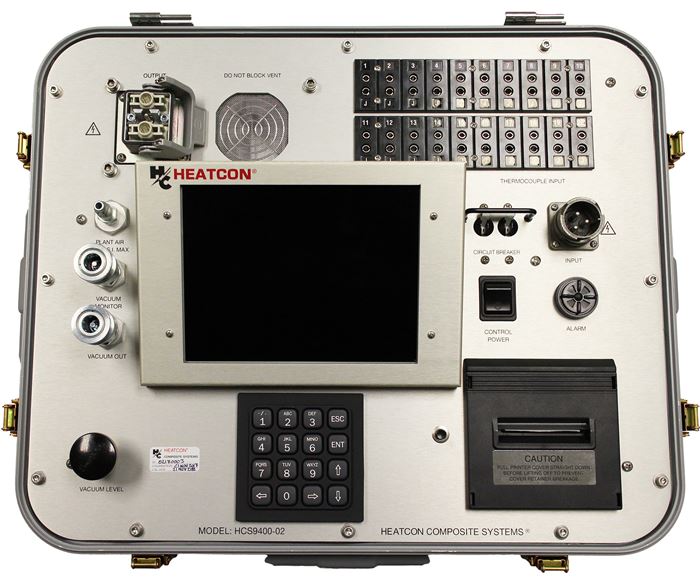CAMX 2018 preview: HEATCON Composite Systems
HEATCON Composite Systems (Seattle, WA, US) is introducing HCS9400-02 Smart Susceptor technology, which uses indirect inductive heating to help provide thermal uniformity in composite repair operations.
HEATCON Composite Systems (Seattle, WA, US) is introducing HCS9400-02 Smart Susceptor technology, which uses indirect inductive heating to help provide thermal uniformity in composite repair operations. The common concepts related to zones of heat and control required to achieve thermal uniformity do not apply for this unit. Instead, the Smart Susceptor produces power in the 100-kHz frequency range to operate induction-heating susceptor blankets. The custom-designed alloys of the susceptor wires have a Curie point (where they lose magnetic induction properties) at the process cure temperature. This results in a “self-regulating” effect near process temperature — colder sections of wire continue to produce heat while hotter sections stop producing heat, thus improving temperature uniformity. HEATCON says Smart Susceptor technology enables the blanket to perform an active role in heat distribution, effectively reducing power (heat) to the areas that have reached the desired temperature, while continuing to apply heat to the cooler areas. Like the company’s legacy hot bonders, the HCS9400-02 Smart Susceptor is said to be user friendly, using hardware and software to provide the composite repair technician with complete control of the hot bond cure process. Booth BB32.
Related Content
-
Novel dry tape for liquid molded composites
MTorres seeks to enable next-gen aircraft and open new markets for composites with low-cost, high-permeability tapes and versatile, high-speed production lines.
-
Materials & Processes: Fibers for composites
The structural properties of composite materials are derived primarily from the fiber reinforcement. Fiber types, their manufacture, their uses and the end-market applications in which they find most use are described.
-
Materials & Processes: Resin matrices for composites
The matrix binds the fiber reinforcement, gives the composite component its shape and determines its surface quality. A composite matrix may be a polymer, ceramic, metal or carbon. Here’s a guide to selection.











.jpg;maxWidth=300;quality=90)



